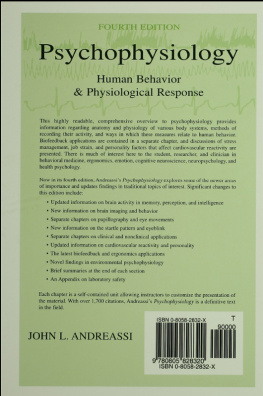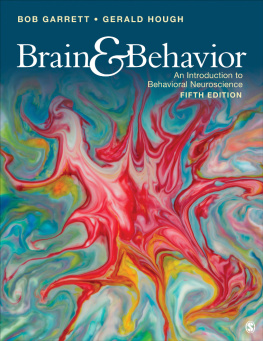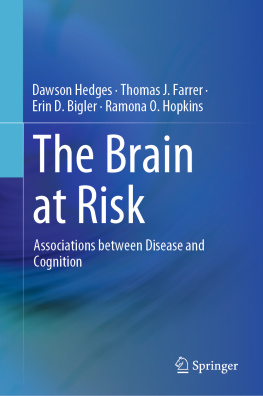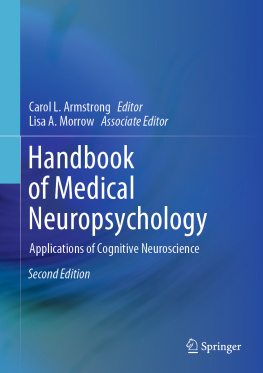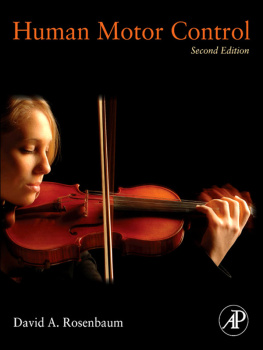
Psychophysiology Human Behavior
and
Physiological Response
Fourth Edition
Psychophysiology Human Behavior
and
Physiological Response
Fourth Edition
John L. Andreassi
Baruch College
City University of New York

Copyright 2000 by Lawrence Erlbaum Associates, Inc.
All rights reserved. No part of this book may be reproduced in any form, by photostat, microfilm, retrieval system, or any other means, without prior written permission of the publisher.
Lawrence Erlbaum Associates, Inc., Publishers
10 Industrial Avenue
Mahwah, NJ 07430
Cover design by Kathryn Houghtaling Lacey
Library of Congress Cataloging-in-Publication Data
Andreassi, John L.
Psychophysiology : human behavior and physiological response / by John L. Andreassi. 4th ed.
p. cm.
Includes bibliographical references and index.
ISBN 0-8058-2832-X (cloth : alk. paper)
ISBN 0-8058-2833-8 (pbk. : alk. paper)
1. Psychophysiology. I. Title.
QP360.A53 2000
612.8dc21
99-41207
CIP
Books published by Lawrence Erlbaum Associates are printed on acid-free paper, and their bindings are chosen for strength and durability.
Printed in the United States of America
10 9 8 7 6 5 4 3 2 1
To John, Jeanine, and Cristina
Contents
Preface
The plan of this book is to provide students with elementary information regarding the anatomy and physiology of various body systems, methods of recording the activity of these systems, and studies and concepts describing how these physiological responses have been correlated with psychological aspects of behavior. Essentially, then, I reaffirm that the goal of this fourth edition is to introduce the beginning student to the field of psychophysiology. My book provides a comprehensive introduction for those new to the area, whether they are upper-level undergraduates, graduate students, or professionals new to the field who are seeking basic information. Psychology students, and especially those in courses concerned with physiology and behavior, physiological psychology, and psychophysiology, will be users of this book. The text will also be valuable to students of behavioral medicine, psychosomatic medicine, biofeedback, biomedical engineering, and to those in other life sciences, including biology and physiology.
The field of psychophysiology continues to develop and grow at an ever increasing pace. In this fourth edition, there are both structural and content changes. There are now separate chapters on pupillography and eye movements. The chapter on eye movements has been expanded to reflect increasing interest in the eye blink and its relation to stress, and, especially, to the startle pattern. A section has been added to cover work on the eye blink component of the startle reaction as it relates to attention, emotion, and psychopathology.
The chapter on applied psychophysiology has been divided to define a division between nonclinical (e.g., detection of deception) and applications to patients in clinical settings (e.g., schizophrenia). Thus, there are now 19 chapters in this book, compared to 17 in the third edition. Another structural change is the addition of brief summaries after each major section in the book. In addition, an deals with concerns over the possible spread of infectious diseases in the psychophysiology laboratory, measures to prevent this possibility, and the other major portion concerns equipment safety.
Content changes have been made in all chapters to cover some of the newer areas of research, as well as to update findings in the traditional topics of interest. There is new information on brain waves in memory and perception (especially gamma wave activity and event-related desynchronization.) Studies of alpha brain waves and intelligence, and new information on brain imaging (positron emission tomography and functional magnetic resonance imaging) and behavior have been added. Recent research on event-related brain potentials in memory, attention, and intelligence is presented, as well as the use of brain potentials in the study of smell. New findings on patterning of facial muscle activity in emotional expressions and on central nervous system control of electrodermal activity are discussed. Other additions concern pupillary changes during processing load and heart activity changes under conditions of incentive and psychological job strain. Cardiovascular reactivity under different conditions of stress, and as a function of personality and social factors, continues as a lively topic of interest and has been extensively updated. Applications of psychophysiology to ergonomics and associated studies of vigilance, workload, and job satisfaction are considered. An update on biofeedback applications to various ailments, especially to asthma, has been accomplished along with some novel information in the area of psychoneuroimmunology (brain, behavior, and immunity). Studies bearing on conceptualizations in psychophysiology have been added as well as newer findings in environmental psychophysiology, including radiation, nicotine, and caffeine effects on brain electrophysiology. I have continued efforts to alert readers to major issues and questions early in most of the chapters.
Psychophysiology continues to be a vibrant and dynamic field. Several societies serve the professional needs of psychophysiologists by organizing meetings and publishing journals. Among these are the Society for Psychophysiological Research, which publishes Psychophysiology; the International Organization of Psychophysiology, responsible for the International Journal of Psychophysiology; the Association for Applied Psychophysiology and Biofeedback, which publishes Applied Psychophysiology and Biofeedback; and the Psychophysiology Society, responsible for coordination and publication of the Journal of Psychophysiology. Other organizations such as the Society of Behavioral Medicine, the American Psychosomatic Society, and the EEG Society also help to meet the professional needs of psychophysiologists. In addition, a new technical group of the International Ergonomics Association called Psychophysiology in Ergonomics has been formed to promote psychophysiological research and applications at the workplace. A number of universities have programs of study in basic and applied psychophisiology. Interested students can contact officials at the various societies mentioned to obtain more information.
This book is based largely on the work of psychophysiologists and other life scientists. I have been able to refer to their work that appears in scientific journals, books, technical reports, and edited handbooks of psychophysiology. There are over 1,700 references to their work, with citations conveniently presented at the end of each chapter.
Many psychophysiologists have generously supplied me with reprints of publications, and I would like to thank them at this time: Dr. Kimmo Ahlo, Dr. Michael Allen, Dr. Robert Barry, Dr. Margaret Bradley, Dr. Cornelis Brunia, Dr. John Cacioppo, Dr. John Connolly, Dr. Bruce Cuthbert, Dr. Richard Davidson, Dr. Ulf Dimberg, Dr. Blaine Ditto, Dr. Thomas Elbert, Dr. Monica Fabiani, Dr. David Friedman, Dr. M. Fredrickson, Dr. John Furedy, Dr. Susan Girdler, Dr. Eric. Granholm, Dr. Gabriele Gratton, Dr. Rita Hari, Dr. L. Hawk, Dr. Kenneth Hugdahl, Dr. William Iacono, Dr. Ray Johnson, Jr., Dr. Rathe Karrer, Dr. Thomas Kamarck, Dr. Alphonse Kok, Dr. Marta Kutas, Dr. Peter Lang, Dr. Kathleen Lawler, Dr. Kathleen Light, Dr. Paul Lehrer, Dr. William Lovallo, Dr. H. Lyytinen, Dr. Constantine Mangina, Dr. Helen Beuzeron-Mangina, Dr. Risto Naatanen, Dr. A. Papanicolaou, Dr. C. Patrick, Dr. John Polich, Dr. S. Porges, Dr, Daniel Ruchkin, Dr. Neil Schneiderman, Dr. Stuart Steinhauer, Dr. Andrew Sherwood, Dr. Joseph Tecce, Dr. Daniel Tranel, Dr. Peter Ullsperger, Dr. Dieter Vaitl, and Dr. Scott Vrana. In addition, several researchers have provided me with glossy photographs for use as figures in this new edition, and for this I express my gratitude to Drs. Peter Lang, Scott Vrana, and Eric Granholm.
Next page
